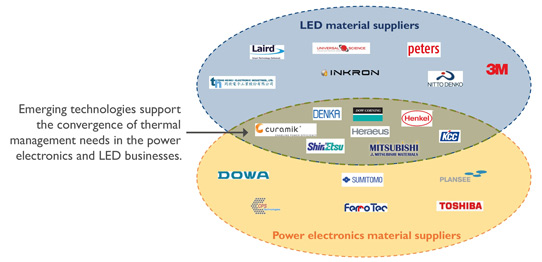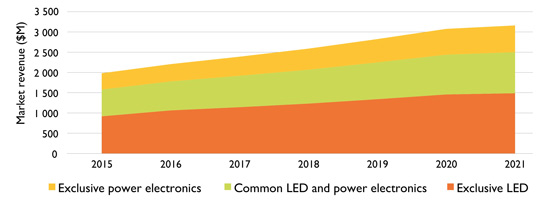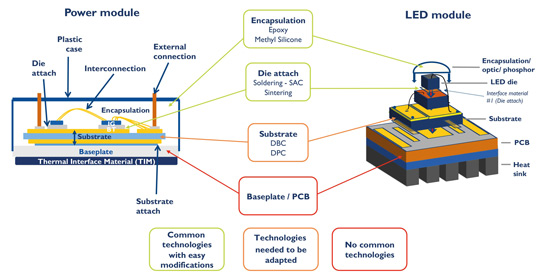- News
3 January 2017
Technical innovations in LEDs and power electronics converging to handle module-level thermal management
In 2015, all economic indicators pointed to continued market growth for both the power electronics and LED industries, especially due to (1) insulated-gate bipolar transistor (IGBT) modules - boosted by the EV/HEV (electric vehicle/hybrid electric vehicle) industry - and (2) general lighting applications (a killer application for LEDs since 2012).
To support this growth and answer the thermal management needs in power electronics and LEDs, a lot of innovative technologies are emerging. According to the report 'Thermal Management Technology and Market Perspectives in Power Electronics and LEDs 2017' from market analyst firm Yole Développement's Power Electronics & LED teams, one of the most impressive technical developments is the convergence of thermal management for both the LED and power electronics sectors, particularly the materials used for thermal management.
"Power electronics and LEDs are different industries that today face similar challenges," remarks Dr Pierric Gueguen, business unit manager at Yole. "Needs for green energy with lower CO2 emissions have led these industries to develop more efficient and smaller solutions," he adds. At the device level, cost pressure and the need for better performance is pushing designers towards smaller and thinner chips, leading also to increased power density. Such power density targets in both power electronics and LEDs bring a convergence of thermal management requirements, supporting the development of new materials.

Picture: Material supplier synergies.
Among materials used for thermal management, Yole specifically investigated the market and technology evolution of die attach, substrates, base-plates/PCBs and encapsulants. Overall, this market will rise at a compound annual growth rate (CAGR) of 6% from $1.98bn in 2015 to $3.16bn by 2021, forecasts Yole. "Their value proposition has the potential to bring business to their suppliers and key differentiating factors to device manufacturers," comments Pierrick Boulay, technology & market analyst at Yole.

Picture: Thermal management market for power electronics and LEDs, 2015-2021.
Power electronic modules represent a healthy market, growing at a 9% CAGR from $2.9bn in 2015 to $4.5bn in 2021. In parallel, the LED packaging market reached $15bn in 2015, after years of strong growth led by LED TV and general lighting. However, price pressure will moderate growth in coming years, with a 3.4% CAGR leading to a market worth $18.5bn in 2021.

Picture: Synergies and differences between power modules and LED modules.
Power electronics and LEDs need the right materials to handle thermal management challenges, notes Yole. As these applications are driven by similar technical requirements, one technical solution can be adopted and developed for one industry before being used by another industry. "The 30% of the overall thermal management material market that is common to both LED and power electronics represents $660m in 2015," notes Boulay. "According to our estimations, such market segment will reach $1014m in 2021," he adds. Moreover, another 30% can be reached by adapting existing technologies used in LED or power for the other application, it is reckoned.
www.i-micronews.com/category-listing/product/


